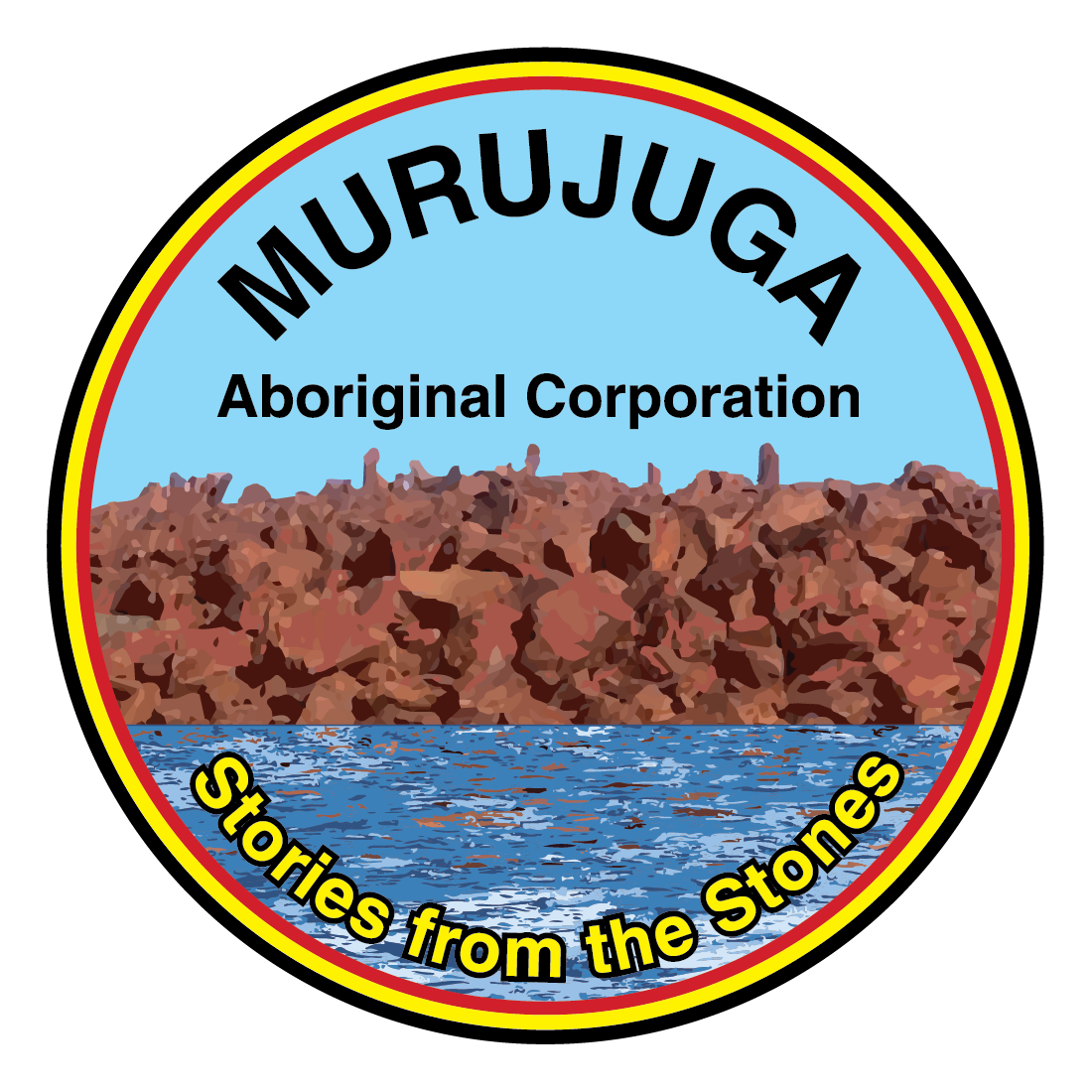About Our Land
Murujuga, meaning “hip bone sticking out” in the Ngarluma-Yaburara language, refers to Murujuga land and sea ‘country’ (a traditional area of land or water) and consists of a narrow peninsula of land as well as 42 islands located near the town of Dampier in the Pilbara region of Western Australia. Aboriginal people have a deep and spiritual connection to their ngurra or traditional ‘country’. For Australian Aboriginal people, the land and the people are connected, both physically (by living on the land) and spiritually (through traditional lore and culture). There is the belief amongst Australian Aboriginal people that if ‘country gets sick’ (damaged, degraded, polluted) then they too will become ill, and might even die. By protecting the land, the people are also protected. Everyone is responsible for looking after ngurra or ‘country’, even the non-Indigenous people who now live and work in the area.
The Burrup Peninsula (Murujuga) is well known for Murujuga National Park. Created in January 2013, Murujuga National Park became the 100th national park gazetted in Australia. Covering an area in excess of 5,134ha, Murujuga National Park is privately owned by the Murujuga Aboriginal Corporation and jointly managed with the Department of Biodiversity, Conservation and Attractions – Parks and Wildlife Service. With over one million recorded petroglyphs, Murujuga has the world’s largest concentration of ancient rock art. These ancient images date back more than forty thousand years. Sadly, the contemporary generations of Aboriginal people no longer incise or carve the rocks of Murujuga. As such, the rock art of Murujuga must be protected and preserved for contemporary and future generations.
Australian Aboriginal people have been living on this land for at least fifty thousand years. The contemporary generations of Australian Aboriginal people are part of the oldest living continuous culture on earth.
Traditionally, Aboriginal people welcomed visitors to their land by performing a ‘Welcome to Country’ ceremony. The purpose of this ceremony is to let the land and the ancestral spirits know that someone is visiting the area. During the ceremony, both the land and the ancestral spirits are asked to protect the visitor, their family, their friends and even their co-workers. With the protection of the land and the ancestral spirits granted, visitors (together with their family, friends and co-workers) are protected from any mischievous spirits that might decide to follow the visitor home, after they have left Murujuga ‘country’.
Thousands of years ago, when the landscape differed in appearance, many Aboriginal groups travelled to Murujuga for trade, marriage, kinship, ceremonies, hunting, fishing, gathering plants and other natural resources and more. However, not all areas of Murujuga were open to resource use. Some areas were strictly ‘off limits’, except during ceremonial time or ‘lore’ business. Other areas were restricted to people of a certain gender. These areas are known today as ‘men’s sites’ or places for ‘men’s business’. Similarly, there are other restricted areas, known as ‘women’s sites’ or places for ‘women’s business’.
Murujuga is also the starting place for Aboriginal ‘Songlines’ (also known as ‘Dreaming Tracks’). These traditional stories, like the one about a fruit bat known as the ‘Flying Fox’, extend back to the beginning of time (known as ‘the Dreaming’). The Songlines are a type of verbal map or ‘track’ which describe landmarks and key events which occurred during ancient time or ancestral period, when the earth was ‘soft’. They can be used like a ‘road map’ to navigate to important inland sites, such as Uluru. Some Songlines even extend right across Australia, to the eastern seaboard.
